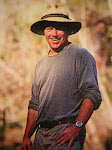6/23/08
When I read the journals of Florida's early explorers, I sometimes wonder, "who were they talking too?" In some cases, the answer is obvious. William Bartram, for instance, was clearly talking to the guy writing his checks - Dr. Fothergill. Luckily for us, Fothergill was a man of many interests. He was also a good judge of character and knew that despite William’s previous failures, he was the perfect person to send into the wilds of Florida and document virtually everything he saw - plants, animals, native peoples, geography, etc.
The Chapman/Brewster expedition of 1890 was more focused. Headed by a group of noted ornithologists, the emphasis was predictably heavy on birds - looking for them, making notes about them and shooting as many as possible (standard MO for 19th century explorer/naturalists, including John James Audubon). However, in his journal of the expedition, William Brewster provides a welcome bonus with his detailed descriptions of the places he explored (Chapman's journals have been lost).
While most of the small back-waters they explored were unnamed (most are still nameless), with close scrutiny it is possible to retrace much of the route. This is a rare gift, but it begs the same question - who was he giving these directions to?! This remote area was unlikely to see settlement for a long time (it's still largely uninhabited) and these men's professional peers were academics from around the country that were unlikely to ever visit these waters. So, it appears that Brewster's intended audience was essentially that small fraternity of outdoors enthusiasts who have both a keen interest in history and nature and who like going into those wild, remote areas where few people in their right mind have gone before. Sound familiar? If some researcher ever finds missing "lost pages" of Brewster's manuscript, I wouldn't be surprised if it ended with - "wanna go?"
Tuesday, March 31, 2009
Subscribe to:
Post Comments (Atom)

No comments:
Post a Comment